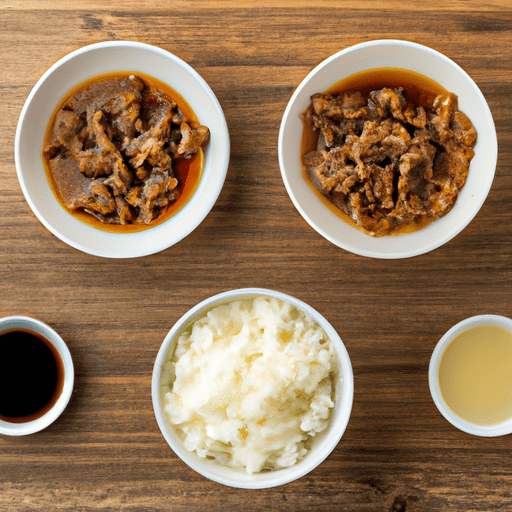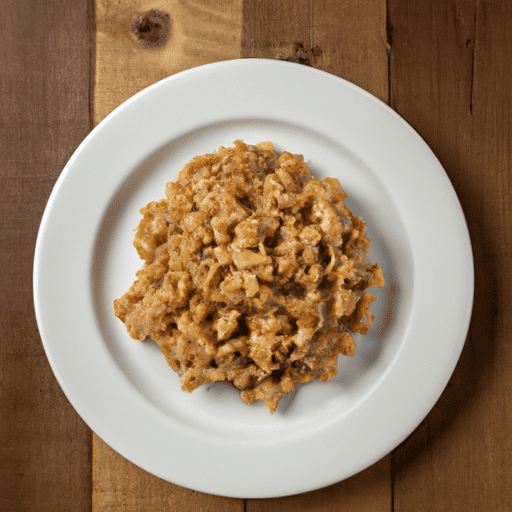Hello rice cooker enthusiasts and foodies! Have you ever tried the flavorful and hearty Japanese dish, Tripe Rice? This recipe combines tender tripe, savory seasonings, and sticky rice to create a satisfying meal that will warm your belly and tantalize your taste buds. Using your trusty rice cooker, you can easily prepare this dish for a comforting weeknight dinner or impressive weekend gathering. So, let’s get cooking and discover the deliciousness of Tripe Rice! We’ve made this japanese tripe rice recipe easy to follow 👨🍳. If you’re looking for our favorite rice cookers to make this recipe, check out our list of top rice cookers here.

Ingredients
- 1 pound beef tripe, cut into small pieces
- 2 cups Japanese short-grain rice
- 4 cups water
- 1/4 cup soy sauce
- 2 tablespoons sake
- 2 tablespoons sesame oil
- 1 tablespoon sugar
- 1/4 cup green onions, chopped
- 1/4 cup cilantro, chopped
Instructions
- Rinse the tripe under cold running water for a few minutes, then soak it in cold water for at least 30 minutes to remove any impurities. Drain the tripe and set it aside.
- In a large pot, combine the rice, water, soy sauce, sake, sesame oil, and sugar. Stir well to combine.
- Add the tripe to the pot and stir until it is evenly distributed throughout the rice mixture.
- Cover the pot and bring the mixture to a boil over high heat. Reduce the heat to low and simmer for about 20-25 minutes, or until the rice is cooked and the tripe is tender.
- Remove the pot from the heat and let it sit, covered, for 5-10 minutes to allow the rice to absorb any remaining liquid.
- Remove the lid and use a fork to fluff the rice. Top with chopped green onions and cilantro before serving. Enjoy!
1. First, rinse the tripe under cold running water for a few minutes to remove any impurities. Then, soak it in cold water for at least 30 minutes.2. Take a large pot and combine 2 cups of Japanese short-grain rice, 4 cups of water, 1/4 cup of soy sauce, 2 tablespoons of sake, 2 tablespoons of sesame oil, and 1 tablespoon of sugar. Stir well to combine.3. Once mixed, add the tripe to the pot and stir until it is evenly distributed throughout the rice mixture.4. Cover the pot and bring the mixture to a boil over high heat.5. Once it boils, reduce the heat to low and let it simmer for about 20-25 minutes, or until the rice is cooked and the tripe is tender.6. Remove the pot from the heat and let it sit for 5-10 minutes, covered. This allows the rice to absorb any remaining liquid.7. Finally, remove the lid and use a fork to fluff the rice. Top with chopped green onions and cilantro before serving. Enjoy! 
How long does japanese tripe rice last in the fridge?
Japanese tripe rice, or “Motsu Meshi,” is a popular dish that consists of beef or pork tripe and rice cooked together. To store leftover Japanese tripe rice in the fridge, first let it cool to room temperature and transfer it to an airtight container. It should be consumed within 3-4 days, as cooked rice has a relatively short shelf life and can develop harmful bacterial growth if left too long. It is important to reheat the rice thoroughly before eating, making sure the internal temperature reaches 165°F (74°C) to ensure any bacteria is killed. It is not recommended to freeze Japanese tripe rice, as the texture of the rice can be affected by freezing and thawing.
Low calorie japanese tripe rice recipe substitutions
To make this Japanese tripe rice recipe lower in calories, there are a few substitutions you could make. Firstly, you can replace the beef tripe with a leaner protein such as chicken breast or extra-firm tofu. You can also reduce the amount of sesame oil to just 1 tablespoon, and use a low sodium soy sauce or reduce the amount of soy sauce to 2 tablespoons. Instead of sugar, you can use a natural sweetener like honey or monk fruit. Finally, you can cut down on the amount of rice used by replacing some of it with steamed vegetables such as broccoli or carrots. These substitutions will still yield a tasty dish, but with fewer calories.
What to serve with a japanese tripe rice?
Japanese tripe rice, also known as “motsu meshi,” is a popular and flavorful dish that typically consists of tripe cooked with soy sauce, sake, and mirin, served over steamed rice. To round out the meal, it’s common to serve a variety of complementary side dishes. One popular option is pickled vegetables, such as cucumber or daikon radish, which help balance the richness of the tripe. Another great accompaniment is miso soup, which adds warmth and depth of flavor. Finally, a refreshing green salad, dressed with a light vinaigrette, is always a great way to finish the meal. Together, these dishes create a well-rounded and satisfying meal that’s sure to please.
Whats the best sauce for a japanese tripe rice?
When it comes to Japanese tripe rice, there are several sauce options that pair well with this dish. One popular option is to serve it with a simple soy sauce-based sauce that has been mixed with a bit of mirin and sake for sweetness and depth of flavor. Another delicious alternative is a spicy sesame seed-based sauce that includes ingredients like soy sauce, rice vinegar, sesame oil, and red pepper flakes. If you prefer a milder option, a combination of dashi, soy sauce, and sugar is also a great choice. So, the best sauce for Japanese tripe rice ultimately depends on your personal taste preferences, but one of these three sauces is sure to be a winner.
Japanese tripe rice health benefits
I’m sorry but there is no such dish as Japanese tripe rice. Tripe is not a commonly used ingredient in Japanese cuisine. However, there are many Japanese rice dishes that have health benefits such as salmon and avocado rice bowls, grilled chicken and vegetable rice bowls, and vegetable stir-fry rice. These dishes are low in saturated fats and high in fiber, vitamins, and minerals. They can also be customized to fit specific dietary needs.

